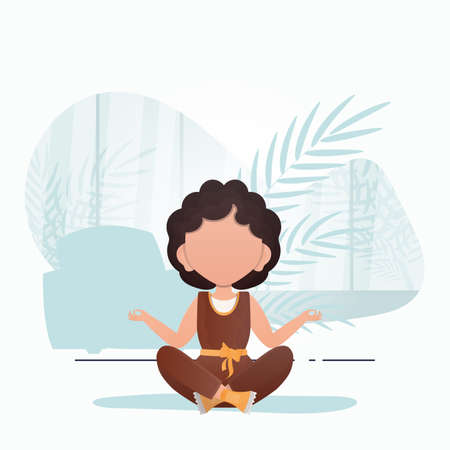Understanding Vastu and Its Link to Health
Vastu Shastra, often referred to as the “science of architecture,” is an ancient Indian system that lays out guidelines for designing and arranging living spaces in harmony with natural forces. Rooted deeply in Indian tradition, Vastu blends spiritual wisdom with practical design principles to promote overall health, happiness, and prosperity. According to Vastu, every home is more than just a physical structure—it is a living entity that absorbs and radiates cosmic energy. The flow of this energy, known as ‘prana,’ can have a direct impact on the physical and mental wellbeing of those who dwell within. When your home’s layout aligns with Vastu principles, it helps maintain a positive balance of the five elements—earth, water, fire, air, and space—thus fostering good health and inner peace. Conversely, imbalances in your home’s energy may manifest as stress, illness, or emotional disturbances. Embracing Vastu is about understanding these subtle influences and making mindful changes to enhance wellness at home.
2. Ideal Vastu Directions for Health and Wellness
In Vastu Shastra, the orientation of your home and the placement of rooms play a crucial role in determining the health and well-being of its residents. Understanding these directions can help you harness positive energies and maintain harmony in your living space. Let us explore which directions are considered auspicious for health, as per traditional Indian beliefs.
Key Directions for Good Health
The North-East (Ishan) and East directions are highly regarded in Vastu for their ability to channel beneficial energies associated with sunrise and purity. Keeping these areas clean, open, and clutter-free is believed to support physical and mental wellness.
Vastu Direction Guide for Different Areas of Your Home
| Area/Room | Ideal Direction as per Vastu | Health Benefits |
|---|---|---|
| Pooja Room or Meditation Area | North-East (Ishan) | Enhances spiritual health and brings peace of mind |
| Main Entrance | East or North-East | Invites positive energy into the home |
| Bedroom | South-West (Nairutya) | Promotes restful sleep and stability |
| Kitchen | South-East (Agneya) | Supports good digestion and vitality |
Cultural Tips for Maintaining Positive Energy Flow
– Avoid keeping heavy objects or dustbins in the North-East corner, as it may block positive vibrations.
– Ensure that windows in the East are kept open during sunrise to let fresh air and sunlight enter.
– Place indoor plants or Tulsi (Holy Basil) near the North-East or East to purify the environment.
– Sleeping with your head towards the South is considered auspicious for physical well-being.
By aligning your house according to these Vastu principles, you can foster an environment that naturally supports better health and wellness for every family member.

3. Simple Vastu Remedies for Common Health Issues
Addressing Frequent Health Problems with Vastu
Many Indian families face health challenges like frequent colds, allergies, headaches, or stress-related problems. While modern medicine is important, simple Vastu remedies using household items and traditional practices can complement your efforts for better wellness. Let’s explore how you can use Vastu principles to tackle common health issues right at home.
Vastu Tips for Respiratory Issues
For those suffering from cough, cold, or breathing difficulties, ensure that the north-east corner of your house is kept clean and clutter-free. Avoid storing heavy objects or unused items in this area. Placing a Tulsi (Holy Basil) plant near a well-ventilated window in the north-east direction not only purifies indoor air but is also considered highly auspicious in Indian culture. Regularly lighting a diya (oil lamp) with pure ghee in this area during the evening hours can further enhance positive energy and promote respiratory wellness.
Vastu Suggestions to Reduce Stress
Stress and anxiety are increasingly common in today’s fast-paced lifestyle. According to Vastu, the south-west corner of your bedroom should have earthy colours like beige or light brown to create a calming environment. Place a Himalayan salt lamp or a bowl of sea salt in this corner to absorb negative energies. Avoid placing mirrors directly opposite your bed as they may disturb your sleep according to traditional beliefs. Practising pranayama (breathing exercises) facing the east direction during sunrise is another effective local remedy rooted in both Vastu and Ayurveda.
Using Household Items for Daily Wellness
You don’t need expensive products to follow Vastu remedies; everyday items can work wonders. For instance, keep fresh flowers in the living room’s east or north direction to uplift mood and promote mental clarity. Use copper vessels for drinking water after storing it overnight, as copper is believed to balance the body’s doshas (energies) according to Ayurveda and Vastu Shastra. Burning camphor or dhoop (incense) every morning helps cleanse the atmosphere and attracts positivity.
Simple Changes, Lasting Benefits
By making these small yet meaningful changes based on Vastu, you can create an environment that supports physical and emotional health. These remedies are time-tested and easily integrated into daily routines using local materials familiar to Indian households. Remember, consistency matters—regularly following these tips will help maintain harmony and wellness in your home.
Placement of Kitchen, Bedroom, and Bathroom for Better Health
According to Vastu Shastra, the placement of essential rooms in your home has a direct impact on the well-being of its occupants. By understanding and applying traditional Indian guidelines for the kitchen, bedroom, and bathroom, you can foster better health and harmony in your family life. Let’s explore the ideal arrangements rooted in Indian customs and practical materials.
Kitchen Placement and Arrangement
The kitchen is considered the heart of an Indian home, as food influences energy and vitality. Traditionally, the South-East (Agni corner) is ideal for kitchens because it harnesses the element of fire effectively. Avoid placing the kitchen directly under or above bathrooms or bedrooms to prevent negative energy transfer.
| Aspect | Recommended Direction/Placement | Indian Custom Tips |
|---|---|---|
| Stove Position | South-East corner | Face East while cooking; use earthenware or steel utensils |
| Sink Placement | North-East corner | Keep water and fire elements separate; place tulsi plant nearby if possible |
| Storage of Grains/Spices | South or West walls | Avoid clutter; use traditional steel dabbas (containers) |
Bedroom Placement for Good Health
The master bedroom should ideally be in the South-West part of the house, offering stability and restful sleep—key aspects of wellness. Children’s bedrooms are best in the West or North-West zones.
Key Vastu Points for Bedrooms:
- Bed Placement: Place beds so that your head points towards the South or East when sleeping. This aligns with natural magnetic fields and supports deep rest.
- Avoid Mirrors Facing Beds: According to Vastu and Indian beliefs, mirrors opposite beds disturb sleep and invite stress.
- Materials: Use wooden beds rather than metal ones, as per traditional preference for natural materials in India.
- No Bathrooms Attached to South-West Bedrooms: If unavoidable, keep the door closed at all times.
Bathroom Location and Arrangements
Bathrooms and toilets are considered sources of negative energy if not placed correctly. North-West is typically recommended for bathrooms, away from kitchen and puja room areas.
| BATHROOM ELEMENT | SUGGESTED PLACEMENT/DIRECTION | CULTURAL PRACTICES/TIPS |
|---|---|---|
| Main Door of Bathroom | Avoid facing main entrance or kitchen directly; prefer North-West wall entry | Use lemon or neem leaves to reduce negativity; always keep bathroom door closed |
| Basin/Tap Location | East/North direction inside bathroom | Copper vessels for water purification are popular in Indian homes |
| Toilet Seat Alignment | Sit facing North or South only—not East/West | Cleansing rituals: sprinkle salt periodically to absorb negativity (common Indian remedy) |
Summary Table: Ideal Room Placements According to Vastu Shastra
| Room Type | Best Direction/Zone |
|---|---|
| Kitchen | South-East (Agni Kon) |
| Main Bedroom (Master) | South-West (Nairutya Kon) |
| Bathroom/Toilet | North-West (Vayavya Kon) |
Selecting correct placements based on these time-tested Vastu principles will help create a nourishing environment where every family member feels secure, healthy, and spiritually uplifted. Following these simple yet profound remedies using familiar Indian materials will support your journey towards holistic well-being at home.
5. Traditional Indian Practices to Boost Positive Energy
Indian homes have always embraced time-tested rituals and elements that align with Vastu Shastra to nurture health, peace, and positivity. Integrating these traditional practices into your daily routine can help balance the energies within your living space, keeping doshas at bay and promoting overall wellness.
Tulsi Plant: The Sacred Protector
The Tulsi plant, also known as Holy Basil, is a revered symbol in Indian households. Placing a Tulsi plant in the north or east direction of your home is believed to attract positive vibrations and purify the air. Regular worship of Tulsi not only boosts spiritual energy but also has proven medicinal benefits for respiratory and immune health.
Camphor for Cleansing Negativity
Burning camphor is an age-old Indian remedy used to cleanse the atmosphere and remove negative energies. Lighting camphor cubes in the morning and evening, especially near the main entrance or pooja room, helps neutralise harmful vibrations (doshas) and infuses the home with purity and calmness. Camphor’s natural fragrance also acts as a stress reliever and mood enhancer.
Lighting Diyas: Illuminating Health and Happiness
The act of lighting diyas (oil lamps) during dusk or dawn holds deep significance in Indian tradition. According to Vastu, placing diyas in the southeast corner of your house dispels darkness, attracts prosperity, and invites healing energies. Using ghee or sesame oil for diyas is considered auspicious, amplifying their ability to drive away negativity and foster good health among family members.
Other Popular Rituals for Wellness
In addition to these practices, sprinkling Ganga jal (holy water), using incense sticks (agarbatti), and chanting mantras can further enhance the positivity of your environment. These simple yet profound rituals are deeply rooted in Indian culture and offer holistic benefits when practised with faith and consistency.
Cultural Wisdom for Modern Homes
By incorporating these traditional Indian elements into your Vastu remedies, you not only preserve cultural heritage but also create a nurturing environment that supports physical, mental, and spiritual well-being. Embrace these time-honoured practices to experience harmony and vibrant health within your home.
6. Vastu Dos and Donts for Healthy Living
Practical Checklist to Avoid Common Vastu Mistakes
Ensuring good health at home through Vastu is not only about placements and directions, but also about adopting daily habits that align with traditional wisdom. Here’s a practical checklist of dos and don’ts, inspired by real experiences from Indian households, to help you avoid common Vastu errors that may impact your well-being.
Vastu Dos for Better Health
- Keep the North-East Zone Clean: Always maintain cleanliness and clutter-free spaces in the North-East corner of your house. This area is considered sacred and is believed to bring positive energy, which supports physical and mental wellness.
- Sleep with Head Towards South or East: Arrange beds so that your head points South or East while sleeping. As per Vastu Shastra, this direction ensures better sleep quality and rejuvenation.
- Use Natural Light and Air: Open windows in the East during morning hours to let in sunlight and fresh air. Sunlight is a natural disinfectant and boosts mood as per both Ayurveda and Vastu practices.
- Maintain a Separate Kitchen and Bathroom: Ensure the kitchen is not adjacent to or directly opposite the bathroom. Mixing these zones can cause imbalance in energies affecting digestion and general health.
- Place Indoor Plants in the North or East: Keep healthy indoor plants like tulsi or money plant in the North or East zone for purifying air and adding positivity.
Vastu Don’ts to Safeguard Your Wellness
- Avoid Sleeping Under Beams: Never place beds directly under exposed beams, as it can lead to disturbed sleep, headaches, or stress according to traditional beliefs.
- No Mirrors Facing the Bed: Do not install mirrors directly facing your bed. This is said to disrupt peace of mind and disturb energy flow during rest.
- No Heavy Storage in the Centre: Avoid placing heavy objects or furniture in the centre (Brahmasthan) of your home. The central space should be open for free movement of positive energy (prana).
- Avoid Clutter in Entryways: Entry doors should be kept free from shoes, dustbins, or broken items. A clean entrance allows healthy vibrations to enter your home.
- No Cooking Facing North: Avoid cooking with your face towards the North direction. It is traditionally recommended to cook facing East for maximum benefit.
Cultural Insight: Everyday Vastu Practices in India
Indian families often share stories where following simple Vastu tips—like shifting a bed’s position or clearing clutter from a corner—has brought noticeable improvement in health and peace at home. By applying these do’s and don’ts consistently, you can create an environment that supports wellness naturally, combining ancient wisdom with practical living for a healthier lifestyle.


